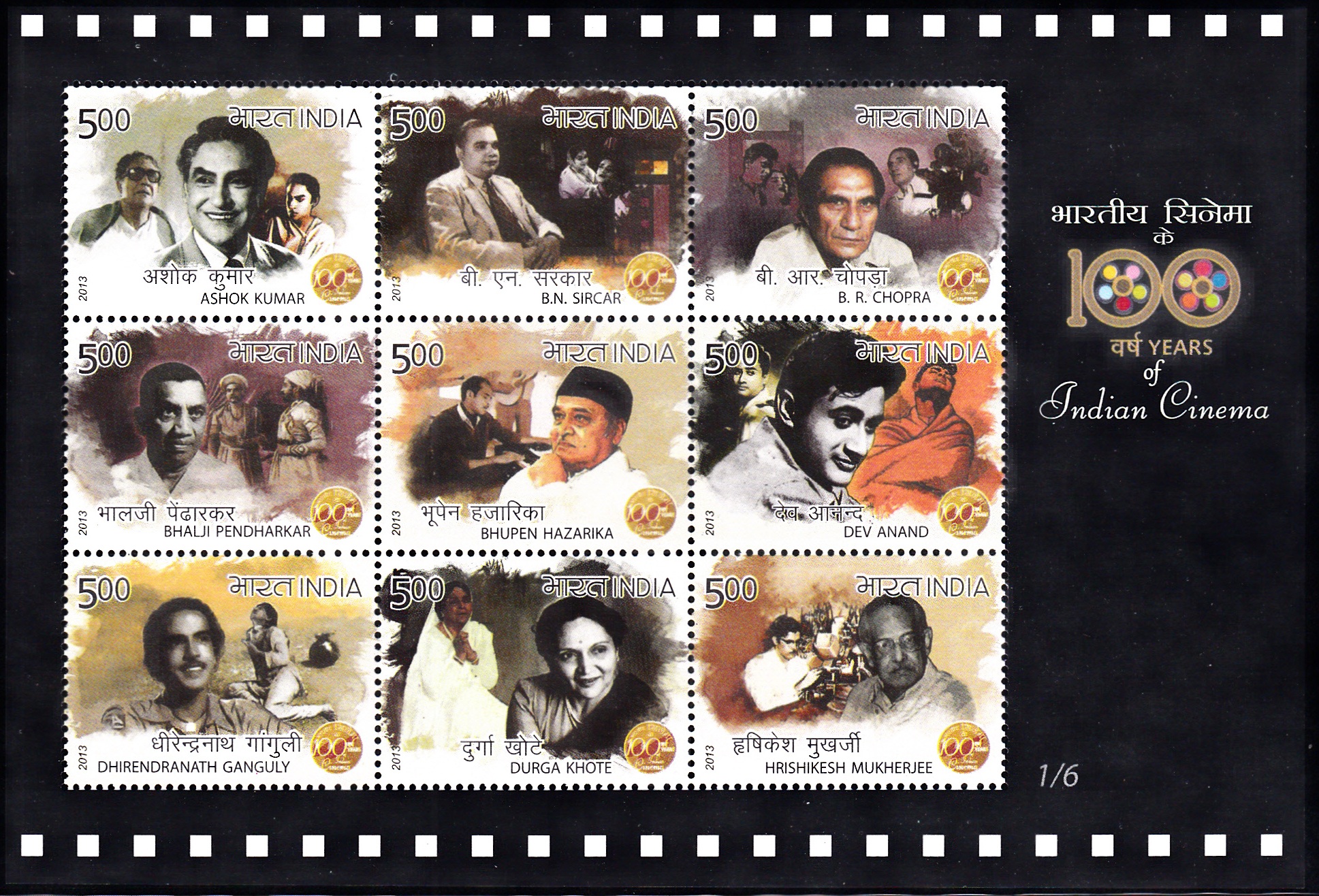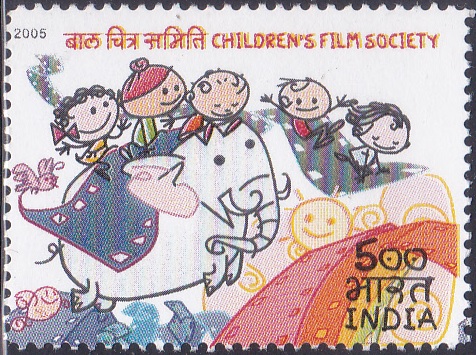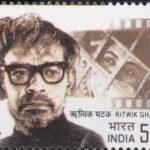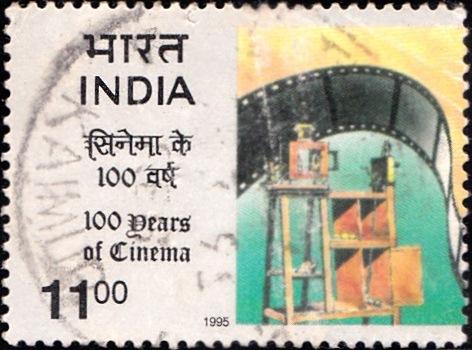
Dr. V. Shantaram
A commemorative postage stamp on the Birth Centenary of V. Shantaram (Shantaram Bapu), a Marathi Indian filmmaker, film producer and actor :

 Issued by India
Issued by India
Issued on Nov 17, 2001
Issued for : The Department of Posts is happy to release a commemorative postage stamp on Dr. V. Shantaram.
Credits :
Stamp & FDC : Sankha Samanta
Cancellation : Alka Sharma
Type : Stamp, Mint Condition
Colour : Four Colour
Denomination : 400 Paise
Overall size : 2.90 x 3.91 cms.
Printing Size : 2.90 x 3.91 cms.
Perforation : 13.5 x 13.5 with elliptical hole on each 3.91 mm sides
Paper : Matt Chromo
Stamps Printed : 0.4 million
Number per issue sheet : 40
Printing Process : Photo Offset
Printer : Calcutta Security Printers Ltd.
Name : Shantaram Rajaram Vankudre
Born on Nov 18, 1901 at Kolhapur, Maharashtra, India
Died on Oct 30, 1990 at Mumbai, India
About :
- In an illustrious career spanning over 7 decades, Dr. V. Shantaram (1901-1990) created 105 films and used the medium of cinema to advocate social messages, winning the acclaim of both connoisseurs and commoners.
- Hailing from Kolhapur in Maharashtra, Shantaram‘s initiation into cinema was through the Maharashtra Film Company of Babu Rao Painter, one of the great pioneers of Indian cinema. Initially a mere studio hand, he progressed through hard work to become a film-maker. In 1929, Shantaram and some friends launched their own concern called Prabhat Film Company, which steadily grew in reputation and became a major force in Indian cinema.
- The films of Shantaram were noted for their visual beauty and powerful narrative. The subjects varied from film to film, and were drawn from contemporary life as well as mythology. The young Shantaram was not afraid to express his nationalist feelings through films even in troubled decades of 1930s and 1940s, despite the severe censorship of the British rulers. Themes of social relevance like untouchability, poverty etc. were also dealt with in his films. The enterprising film-maker kept abreast of the technological developments in the industry happening elsewhere in the world. Films like Dharamatma (1935), Sant Tukaram (1936) and Aadmi (1939) were not just commercial successes, but also won critical acclaim.
- In 1941, Shantaram parted ways with the Prabhat Studios. He formed his own studio under the name Rajkamal Kalamandir in Bombay. A series of hugely successful films like Shakuntala (1943), Dr. Kotnis Ki Amar Kahani (1946), Jhanak Jhanak Payal Baje (1955), Do Ankhen Barah Haath (1957) and Navrang (1959) were produced under this banner, making him a legend in the film industry. His masterpiece was perhaps Do Ankhen Barah Haath, which, apart from winning the President’s Gold Medal for the best film and several other awards at the national level, was recognised abroad also.
- The movement for children’s films was close to V. Shantaram‘s heart. He made significant contributions to the Children’s Film Society of India, of which he accepted the honorary Presidentship in 1978. The V. Shantaram Motion Picture Scientific Research and Cultural Foundation which he set up in 1977 continues to serve Indian cinema through technical research and cultural advancement. Many awards were conferred upon this great movie maker, the prominent among them being the Padma Vibhushan (awarded posthumously), the Dada Saheb Phalke Award and honorary Doctorate of Nagpur University.







